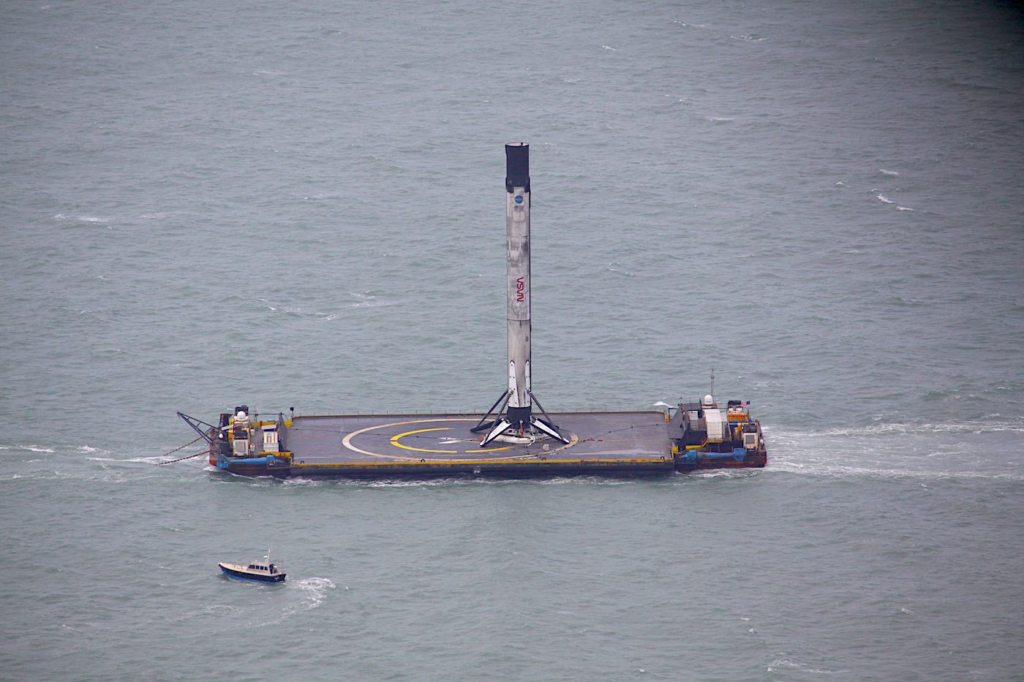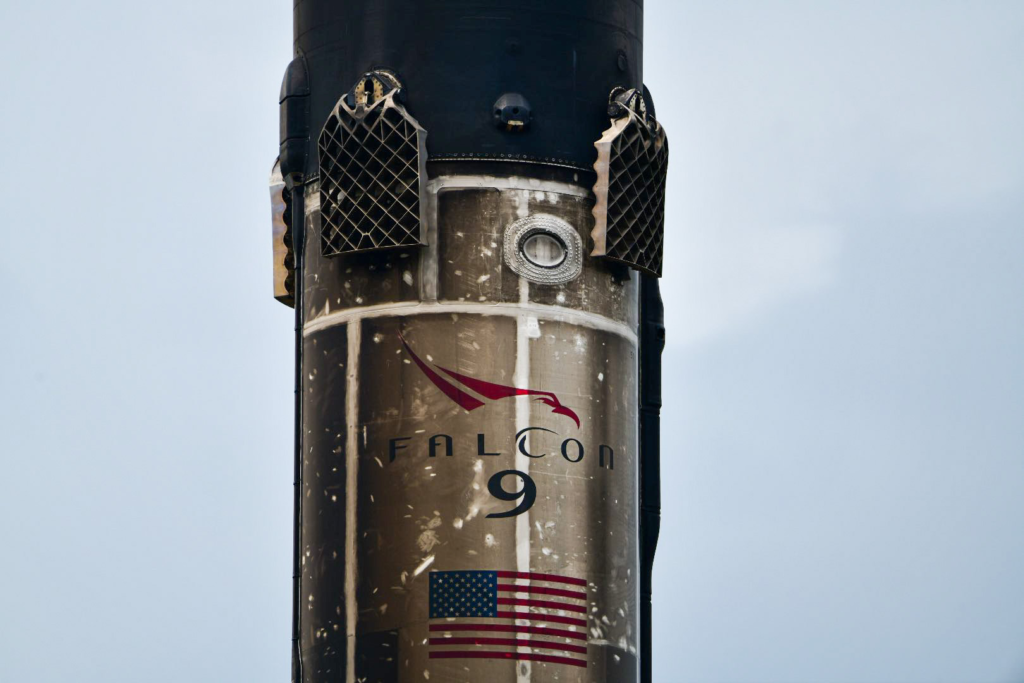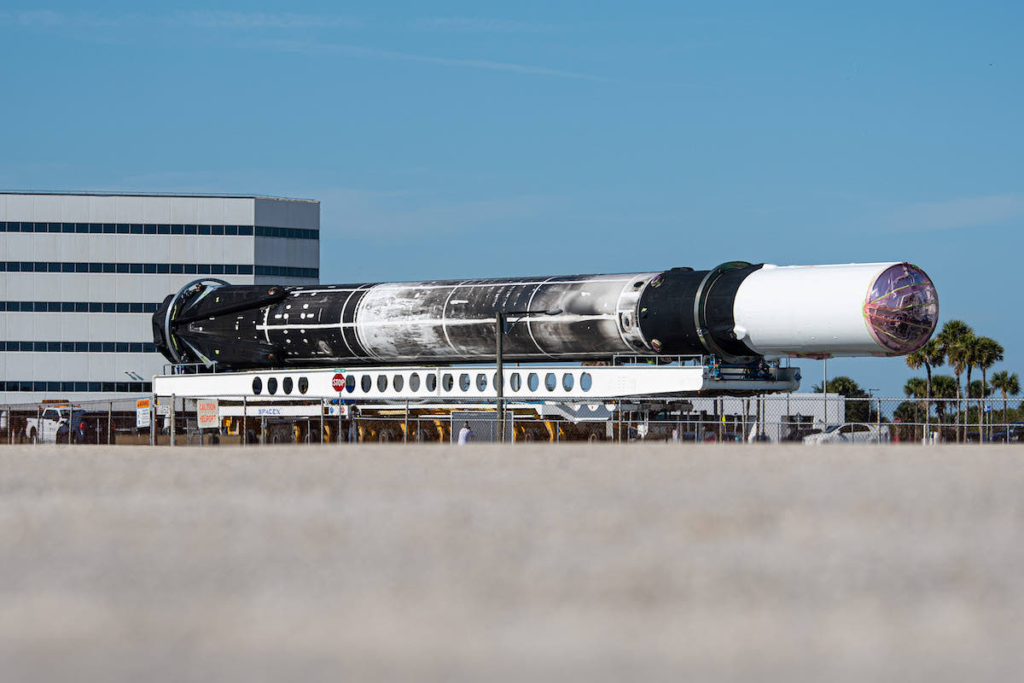
SpaceX’s Falcon 9 Gets New Reuse Record
For a long time now the Falcon 9 has been launching and reusing its boosters. Since the rocket’s first mission, the launch cadence has managed to grow exponentially as the company sets new records what seems like each week. What’s arguably most impressive however is the fact that SpaceX is continuing to work on and upgrade this launch system, despite its success.
We saw an example of this just yesterday when a Falcon 9 booster launched before separating and landing for a 16th time. This is a big deal as it marks a new record for the launch system and sets a new standard for the other operational boosters. One step closer to SpaceX’s goal of reusing the booster 20 times.
To put in perspective how far this system has come since its first mission and early development, the plan originally was to reuse the booster up to 10 times. Even this was considered extremely ambitious and risky by some. Here I will go more in-depth into this milestone, the continued upgrades of this system, what to expect in the coming weeks, and more.
16th Landing

Last night a Falcon 9 lifted off apart of a routine Starlink satellite mission. Following stage separation, the booster flew back toward Earth and eventually made a successful landing. Right after SpaceX tweeted saying, “Falcon 9’s first stage has landed on the Just Read the Instructions droneship, completing the first 16th launch and landing of a booster”.
The mission came after several months of inspections and refurbishment of the booster, otherwise known as recertification to prove that it could fly as many as five more times after completing its 15th launch and landing last December. This single booster has now launched 801 spacecraft and payloads, plus two astronauts, in more than three years of service.
In the many years this rocket has been operating, there has been a long list of booster variants and upgrades. V1.0 flew five successful orbital launches from 2010–2013. The much larger V1.1 made its first flight in September 2013. Both v1.0 and v1.1 used expendable launch vehicles (ELVs). The Falcon 9 Full Thrust made its first flight in December 2015. The first stage of the Full Thrust version was reusable. The current version, known as Falcon 9 Block 5, made its first flight in May 2018.
Specifically, in 2017, SpaceX started including incremental changes, internally dubbed Block 4. Initially, only the second stage was modified to Block 4 standards, flying on top of a Block 3 first stage for three missions. Block 4 was described as a transition between the Full Thrust v1.2 Block 3 and Block 5. It includes incremental engine thrust upgrades leading to Block 5. However, in October 2016, Musk described Block 5 as coming with “a lot of minor refinements that collectively are important, but upgraded thrust and improved legs are the most significant”. In January 2017, Musk added that Block 5 “significantly improves performance and ease of reusability”.
Over time as boosters kept coming back in good shape despite already being reused 10 plus times, SpaceX continued to refurbish and try to launch again. This eventually led to the most recent milestone and goal to reach 20 launches for a single booster. In total, the company has around 16 flight-proven Falcon boosters in its fleet. This large number of boosters combined with reusability is what has allowed SpaceX to launch so frequently.
All this being said, SpaceX has gotten to the point where the rocket is no longer the limiting factor but instead the launchpad. The three launch sites include Launch Complex 39A of the Kennedy Space Center, Space Launch Complex 4E of Vandenberg Air Force Base, and Space Launch Complex 40 at Cape Canaveral Air Force Station. SpaceX has flown out of Space Launch Complex 40 at Cape Canaveral Space Force Station as often as once every five days. The Falcon 9 launch pad at Vandenberg Space Force Base in California can be set up for another mission in fewer than 10 days.
The other available site, at NASA’s Kennedy Space Center, is currently the only pad to support crew and cargo flights to the space station and the sole facility designed for the Falcon Heavy rocket. Those flights have taken priority at Kennedy’s Launch Complex 39A, and it takes up to three weeks to reconfigure the pad when alternating between Falcon 9 and Falcon Heavy missions. While not ideal, on April 21, 2023 the United States Space Force, Space Launch Delta 30 granted SpaceX permission to lease Vandenberg Space Launch Complex 6 for Falcon 9 and Falcon Heavy launches. SLC-6 is likely to become the fourth launch site for Falcon 9.
Falcon 9 Reusability

Falcon 9 reusability has become very normal despite the fact that it’s an incredibly complex and unique process. Several new technologies needed to be developed and tested to facilitate the successful launch and recovery of the first stages of Falcon 9 and Falcon Heavy. One example is the restartable ignition system for the first-stage booster. Restarts are required at both supersonic velocities in the upper atmosphere—in order to reverse the high velocity away from the launch pad and put the booster on a descent trajectory back toward the launch pad—and at high transonic velocities in the lower atmosphere—in order to slow the terminal descent and to perform a soft landing. If the booster returns to a landing site on land another burn is needed shortly after stage separation to reverse the flight direction of the booster, for a total of four burns for the center engine.
Hypersonic grid fins were added to the booster test vehicle design beginning on the fifth ocean controlled-descent test flight in 2014 in order to enable precision landing. Arranged in an “X” configuration, the grid fins control the descending rocket’s lift vector once the vehicle has returned to the atmosphere to enable a much more precise landing location. Iteration on the design continued into 2017. Larger and more robust grid fins, made from forged titanium and left unpainted, were first tested in June 2017, and have been used on all reusable Block 5 Falcon 9 first stages since May 2018.
When landing a Falcon 9 booster, SpaceX offers three options, depending on launch requirements: landing on land, landing at sea, or expending the first stage, in order of increased performance and cost. Any Falcon flights launched into geostationary orbit or exceeding escape velocity require landing at sea, or expending the first stage. Less demanding launches from Florida can return to Landing Zones 1 and 2 at Cape Canaveral Space Force Station, while less demanding launches from California can return to Landing Zone 4.
As of 2022, SpaceX built three autonomous spaceport drone ships, one operating on the West Coast and two on the East Coast of the United States. They have since become the most popular landing site for Falcon 9 boosters. The Droneships are autonomous vessels capable of precision positioning, originally stated to be within 3 m (9.8 ft) even under storm conditions, using GPS position information and four diesel-powered azimuth thrusters. In addition to the autonomous operating mode, the ships may also be telerobotically controlled.
The azimuth thrusters are hydraulic propulsion outdrive units with modular diesel-hydraulic-drive power units manufactured by Thrustmaster, a marine equipment manufacturer in Texas. The returning first stage must not only land within the confines of the deck surface, but must also deal with ocean swells and GPS errors. SpaceX equips the ships with a variety of sensor and measurement technology to gather data on the booster returns and landing attempts. At the center of the droneship landing pads is a circle that encloses the SpaceX stylized “X” in an X-marks-the-spot landing point. While the first attempts with these sea platforms had some explosive results, there hasn’t been a crash landing in a very long time.
With all this in mind, once the booster lands either at a landing pad or Droneship, it needs to then be refurbished. In 2016, SpaceX President Gwynne Shotwell gave a more realistic appraisal of the potential savings of a reused launch now that attempts to reuse the second stage had been abandoned due to cost and weight issues. She said at US$1 million cost of refueling and US$3 million cost of refurbishing a used first stage could potentially allow a launch to be priced as low as US$40 million, a 30% saving.
According to Elon Musk, almost every piece of the Falcon should be reused over 100 times. Heat shields and a few other items should be reused over 10 times before replacement. In March 2017, SpaceX announced progress in their experiments to recover, and eventually reuse, the 6-million dollar payload fairing. SpaceX began re-flight of previously launched booster stages in 2017. The first re-flight was accomplished in March 2017, nearly a year after the booster’s maiden flight; the second was in June 2017, only five months after its maiden flight.
In August 2020, Elon Musk tweeted that refurbishment and reuse of a booster is done for less than 10% the price of a new booster while the payload reduction is below 40%. According to his tweet, SpaceX breaks even with a second flight per booster and saves money from the third flight on. At that time, Falcon 9 Block 5 had made 35 flights with 11 boosters.
Conclusion
SpaceX just reached a new record for Falcon 9 booster reuse. With this complete, the journey to 20 launches with a single booster comes even closer. We will have to wait and see how it progresses and the impact it has on the space industry.
